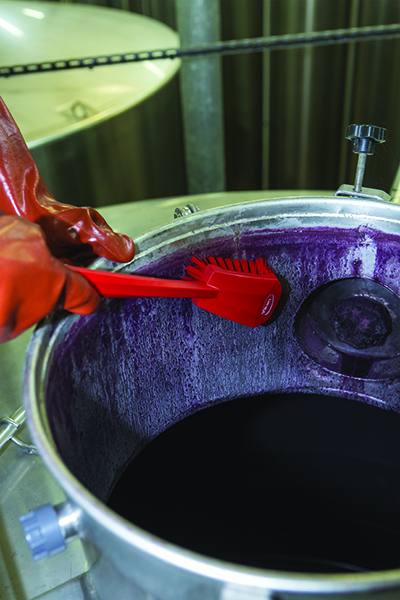If You Aren’t Color Coding Yet, You’re Way Behind

Since the introduction of FSMA, food safety has been under a much-needed magnifying glass. Standards for hygiene and accountability are increasing, and companies are implementing more measures to keep consumers safe. One of the ways in which businesses are being proactive is through implementing color-coding plans. If you have not heard of this type of plan yet, it’s time to get schooled; and if you have, this article will provide a quick refresher on why companies are expanding their spectrum on contamination prevention—by literally implementing the color spectrum in their plants and businesses.
What Is A Color-Coded Plan?
A strategy for a plant or business that designates certain colors for a specific area or purpose designed to promote safety and cleanliness.
Example Plans. Although color-coding plans vary by the needs and demands of each plant, the following are the most popular types of color-coding plans currently being practiced in food manufacturing.
Allergen/Potential Contaminant Distinction
Food Processors and manufactures usually have identified potential allergens and contaminants that pose a risk to the production process. Color distinction for equipment or instruments that come into contact with these potential contaminants is an ideal tool for food safety. Determining the amount of items that fall into this category within your facility is the first step to selecting the appropriate amount of colors to implement. The most basic color-coding plan for this purpose would be to select one color to represent tools that come into contact with a particular risk agent and one color to represent those tools that may be used elsewhere. If a plant has more than one risk agent, this plan may be expanded to include several colors. It is important to remember, however, that simplicity is key in color coding and that additional colors should be implemented strictly on an as-needed basis.
Zone Distinction
Many plants already have identified zones in place based on what is produced in each zone or simply due to operating a large plant. This presents an ideal opportunity to color code zones to keep tools in their proper place.
Shift Distinction
Certain plants that have a large number of employees working different shift times should also consider color coding. Color coding by shift can hold each shift responsible for proper tool use and storage. This approach also allows management to see where work habits may be falling short and where the cost of tool replacement is highest.
Assembly Process Distinction
Plants that have assembly line-like processes can implement color coding if necessary to differentiate tools that belong to each step. For example, this becomes particularly important in plants that deal with products such as meat; obviously you do not want to use the same tools with raw and processed meat. Color coding eliminates the question of whether or not a tool is meant for each step in the process.
Cleaning Purpose Distinction
For many food plants, cleaning and sanitizing are processes that are considered different in purpose and practice. Often, there is a specific list for cleaning and then a separate plan for sanitizing. Implementing a two color-coding plan can distinguish tools that are meant for each process.
Why You Need A Color-Coded Plan
It helps meet FSMA requirements. A major part of complying with FSMA regulations is having proper documentation to prove safety measures. Color-coding plans do exactly that, and most providers of these products can provide you with the necessary documentation.
It reduces pathogens and allergens contamination. For food producers, this is the most important reason to implement color coding. There is nothing worse for a company than experiencing product contamination or a recall; this is one step that may prevent such events from occurring.
It is easy to understand. Color coding works so well because it is so simple. All employees, even those who may not speak the same language or are unable to read posters and manuals that dictate proper procedures, can easily comprehend it.
It creates a culture that holds employees accountable. Managers enjoy color-coding practice because it is a simple measure that really works to hold employees accountable in the proper use of tools. It becomes much more obvious when a brightly colored tool is out of place, and thus workers are more likely to follow proper procedure.